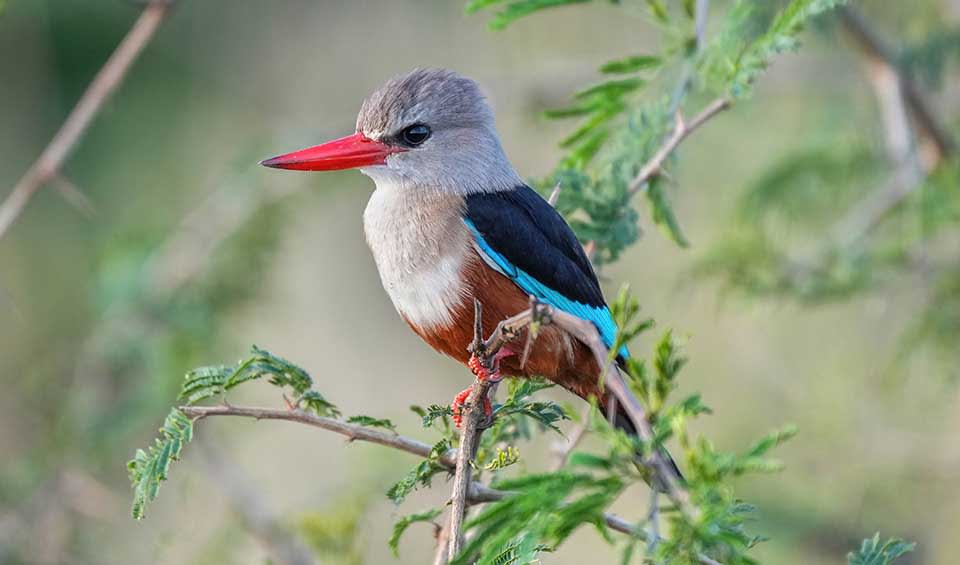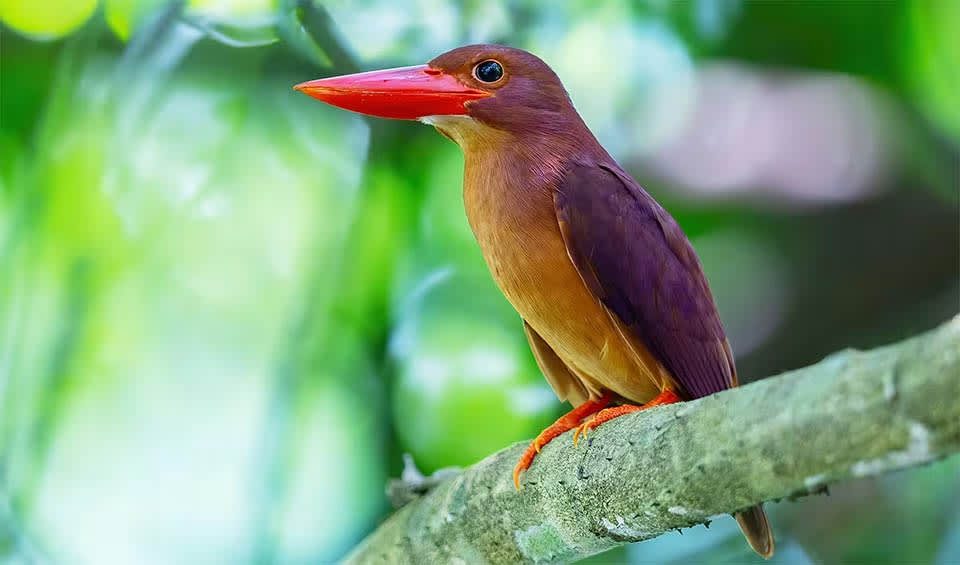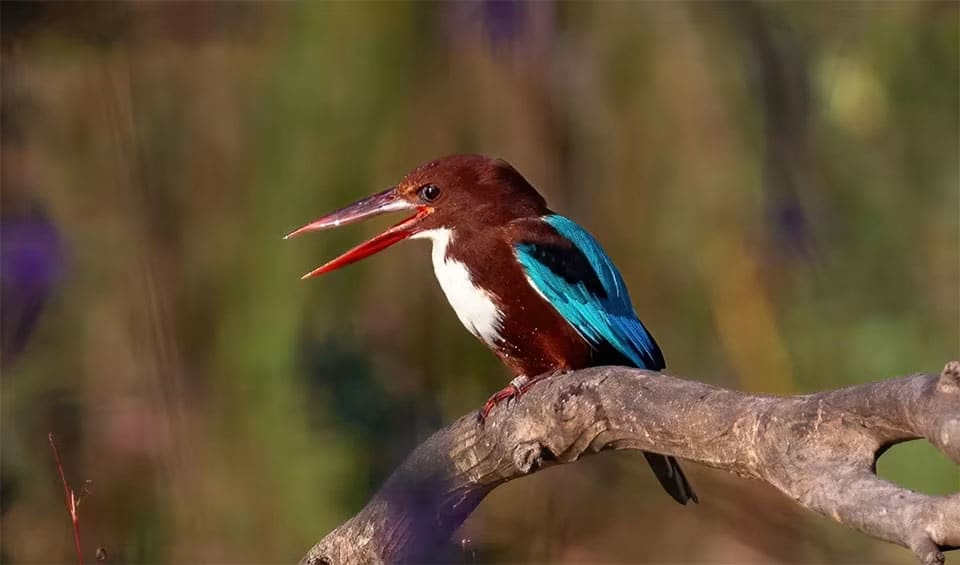Halcyon – Tree kingfishers
They can expertly navigate both water and land to secure their meals
Tree kingfishers are renowned for their distinct vocalizations as they are for their vibrant colors. Unlike their riverine relatives, tree kingfishers are often found away from water, inhabiting woodlands, forests, and savannas.
These birds have loud and varied calls, which can range from melodious whistles to harsh chattering and even a sound reminiscent of human laughter. These calls serve multiple purposes, including communication between mates, signaling territorial boundaries, and sometimes as an alarm to warn off potential threats.
While they are named kingfishers, not all species within this group are reliant on fish for their diet. Many tree kingfishers feed on a diverse array of prey, including insects, reptiles, amphibians, crustaceans, and even small mammals and birds. They are adept hunters, often perching silently for long periods to spot prey before swooping down to snatch it with their strong bills. Their hunting is not limited to the air—they will also forage on the ground, pouncing on unsuspecting prey from above.
Tree kingfishers typically nest in tree cavities, which they may excavate themselves or take over from other birds. Some species will also use termite nests or natural crevices in trees. They lay clutches of two to seven eggs, which both parents incubate. The chicks are altricial, born blind and featherless, and require extensive parental care before they fledge.
Tree kingfishers exhibit a high degree of adaptability, with some species thriving in close proximity to human settlements where they can take advantage of gardens and parks as hunting grounds.
Species in this genus
Brown-hooded kingfisher
Isn’t obsessed with fishing — in fact, it rarely fishes at all!
Grey-headed kingfisher
Despite the name, it rarely goes fishing!
Ruddy kingfisher
Notoriously difficult to spot due to their preference for dense, shadowy forest habitats
White-throated kingfisher
These birds are quite chatty, and their sounds are like a strong and determined rattling laugh





